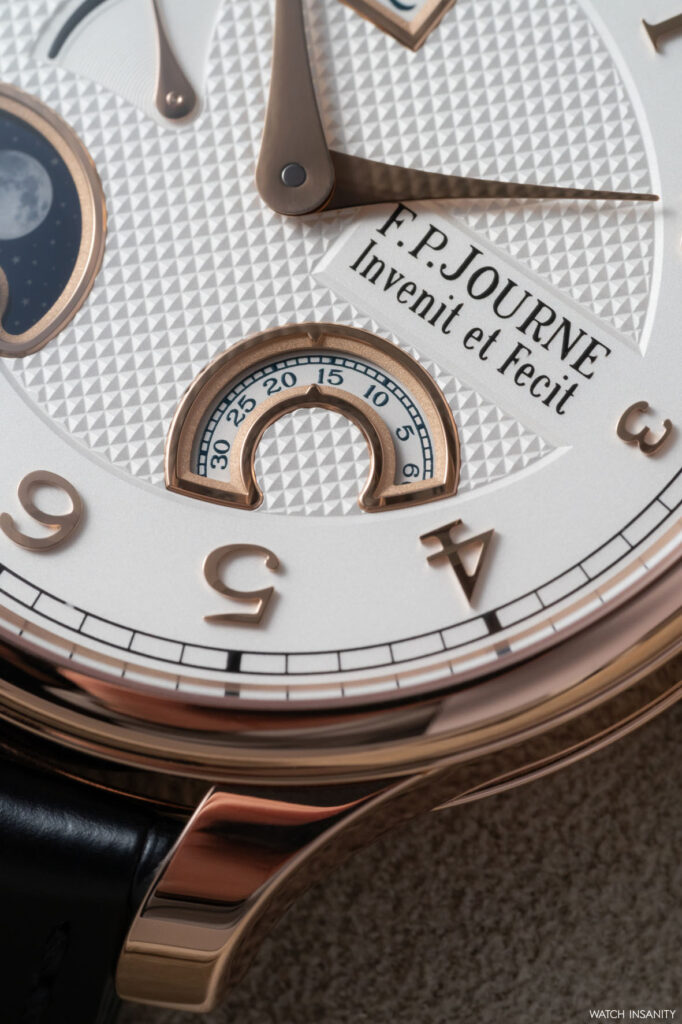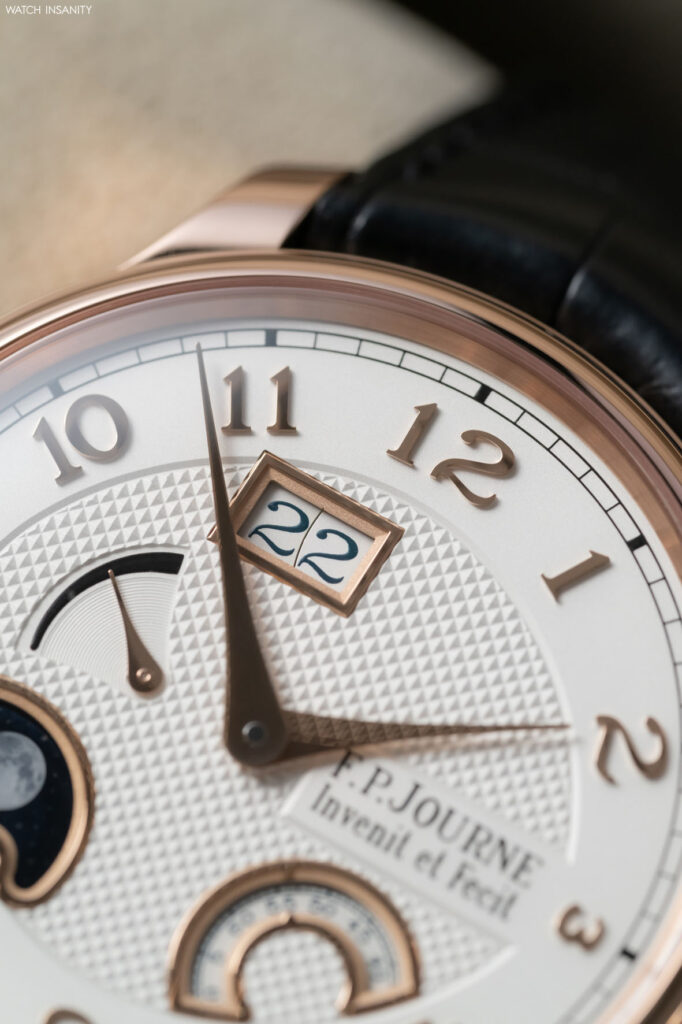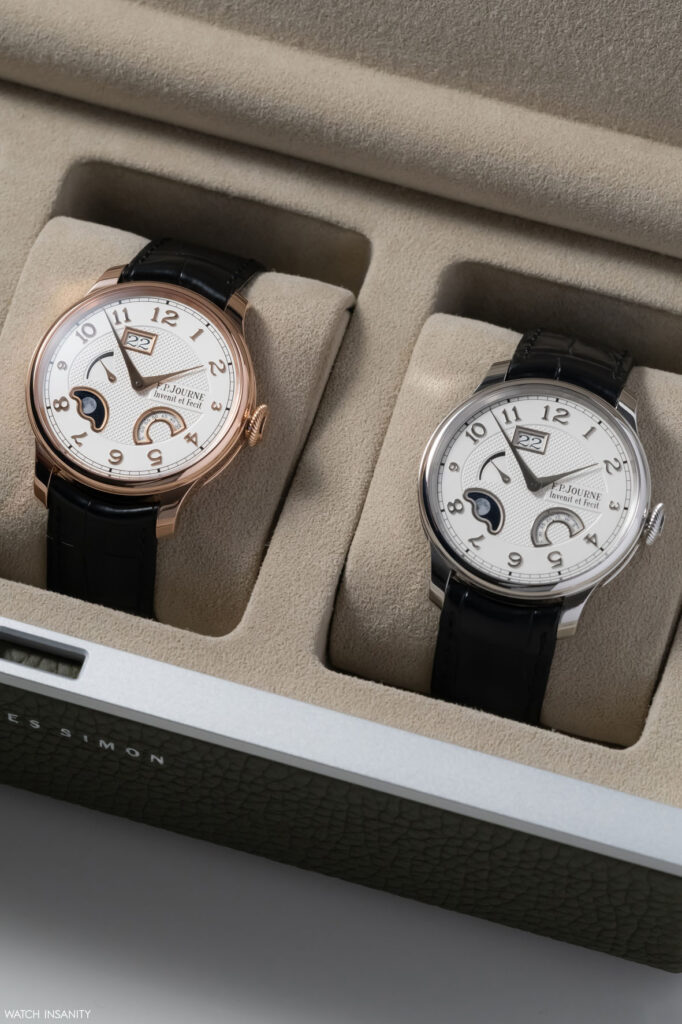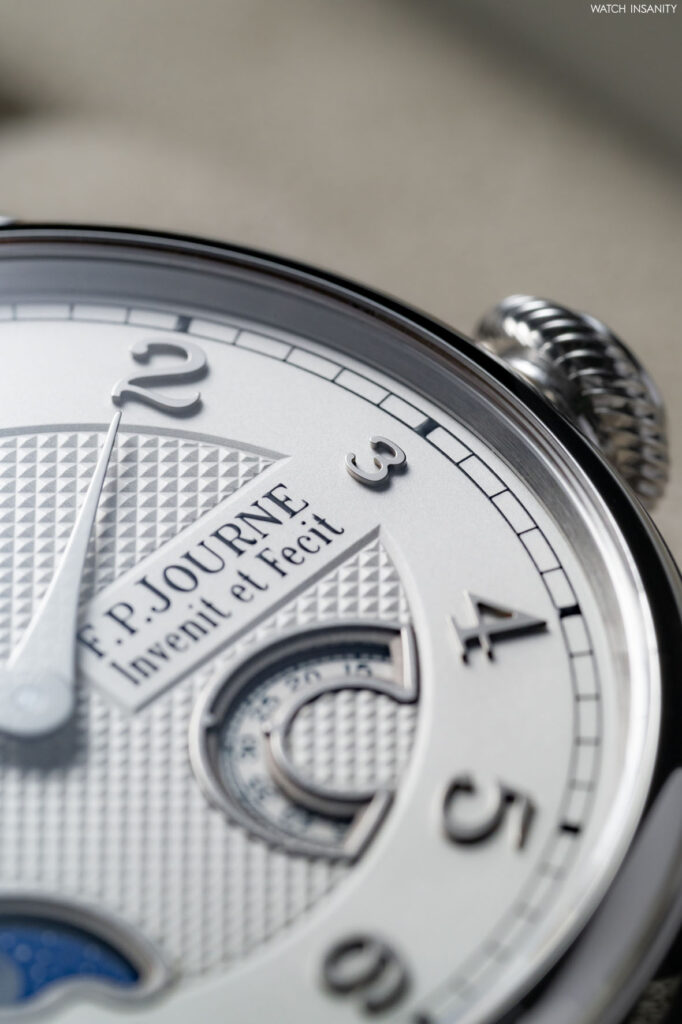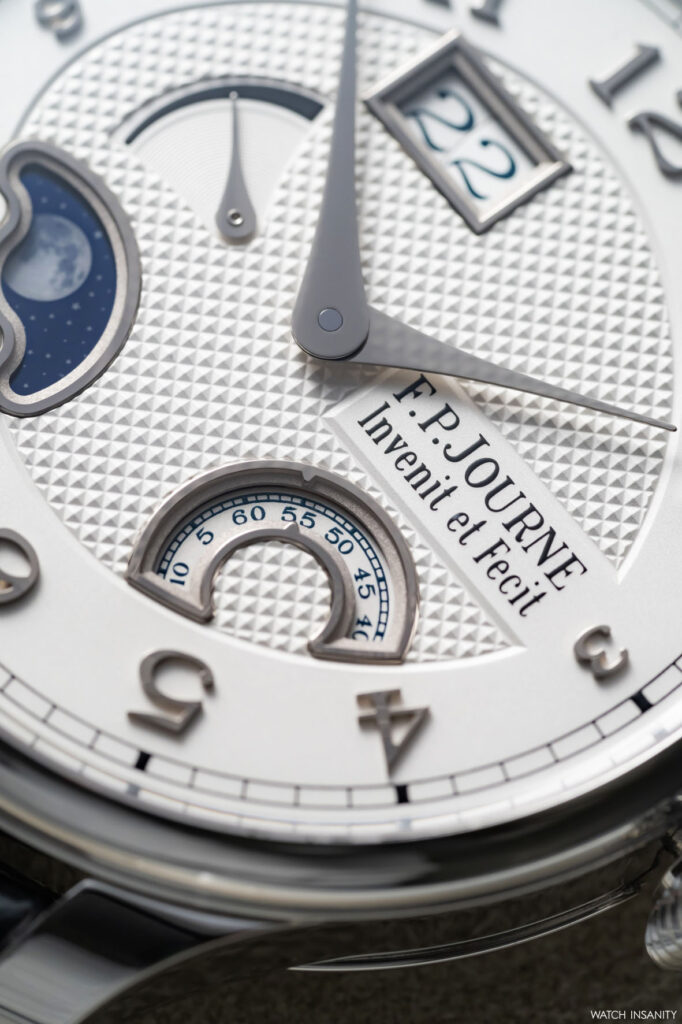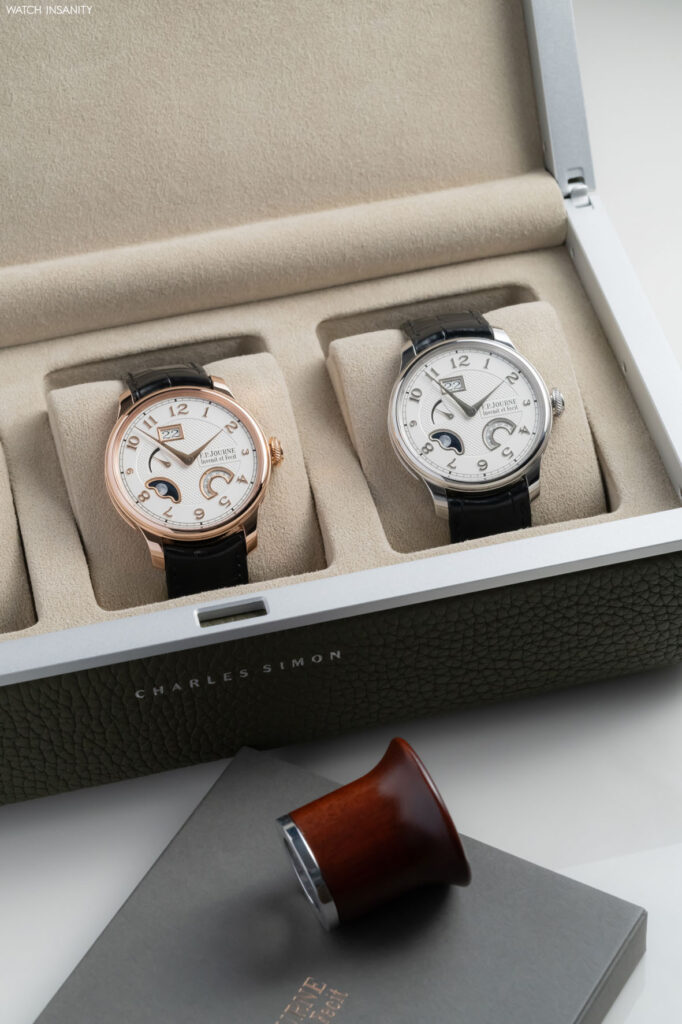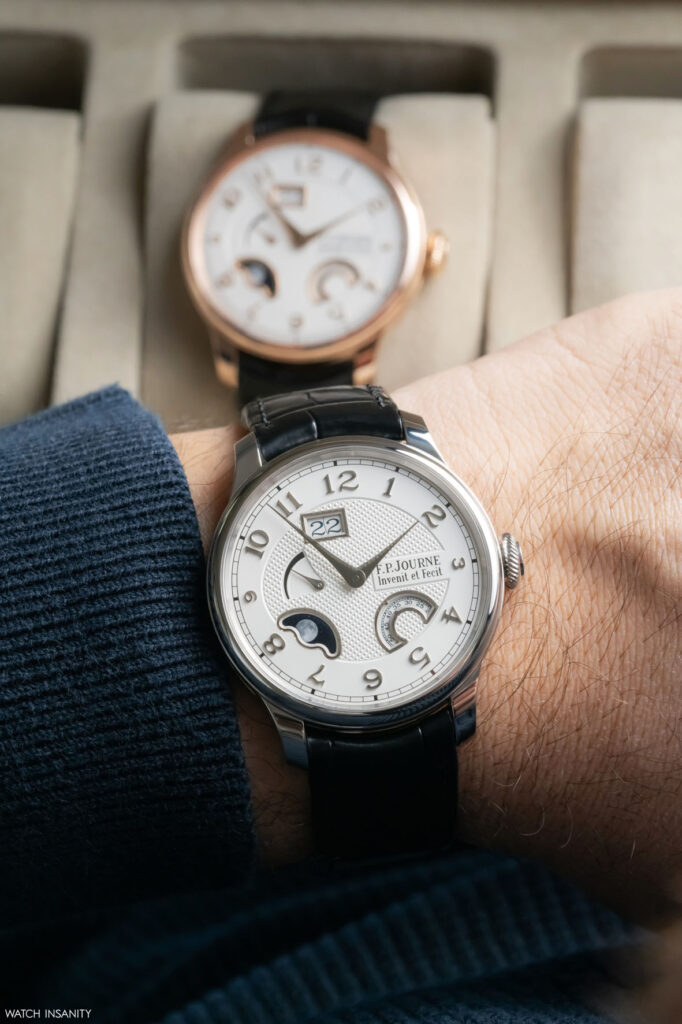Divine and the power of detail: a lesson by F.P. Journe
2 September 2024Writing about the watches of François-Paul Journe is always kind of awe-inspiring. First of all, because writing about a mechanical masterpiece like the Divine is a bit like writing about the Mona Lisa or Michelangelo’s David without being banal. Difficult. Moreover, there are often no words up to the task of narrating the emotional engineering and aesthetic pleasure that the Maestro knows how to instil in all his creations. Divine in primis. Let us try again.
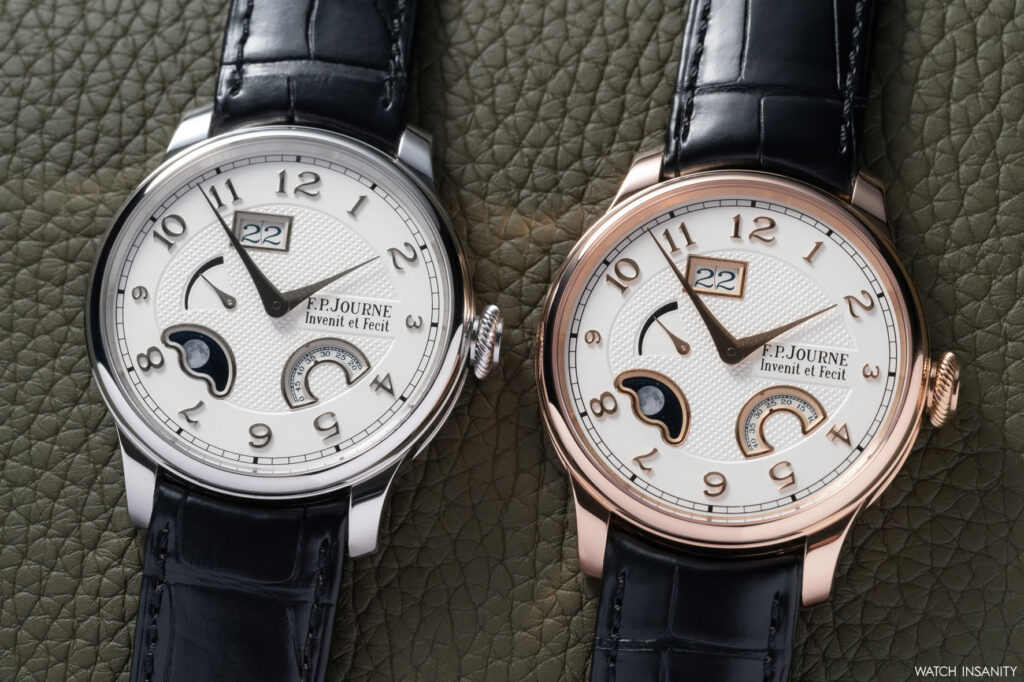
Let us try again because, if you’ll remember, we wrote about this watch just under two years ago in this article in which we described the genesis, aesthetics and mechanics of the Divine. Well, much of what you can read there also applies perfectly to the references we are discussing on this page. The history of the collection, the dimensions of the case, the finishes, the characteristics of the calibre remain substantially unchanged. And it is to those very lines that we refer you, to refresh your memory as to what the Divine is today in the François-Paul Journe collections.
What distinguishes the references we are writing about today is essentially the dial, the aesthetics of which seem unchanged but which, on closer inspection, turn out to be completely different – and, in a certain sense, even more classic. In essence, by changing only a few details, now it appears to be a completely different Divine from the one we had come to know.
FRANÇOIS-PAUL JOURNE DIVINE: THE DIAL’S DETAILS
The details, then. Because the structure of the dial, as far as the indications are concerned, remains essentially unchanged: large date at 11 o’clock, power reserve indicator at 10 o’clock, moon phase window at 7:30 and small seconds window at 4:30. The latter still houses the partial counter disc, the reading of which does not interfere with that of the hours and minutes, while on the moon phase disc, the Earth’s natural satellite and the shaded blue starry sky are once again finished with a realistic touch.
What changes is the rest. The central part of the dial abandons the grené finish to accommodate a guilloché decoration with a clous de Paris motif, which is very classic but which, in terms of overall balance, posed a problem to François-Paul Journe: to make the indications stand out while preventing the decoration from spoiling the windows’ aesthetics. The solution chosen was the most rational, and one that guaranteed the best result: framing them.
The frames are one of the details that distinguish these Divines from their predecessors. They are made of 18K 5N gold on the version with an 18K 6N gold case, and of 18K white gold on the version with a platinum case. They surround the large date, moon phases and small seconds, giving the whole an interesting aesthetic balance. Very classic. For the power-reserve indicator, however, François-Paul Journe has chosen a different solution.
While on the previous Divine it sort of ‘floated’ inside the dial space, aided by the latter’s grené finish, this would not have been possible with the Clous de Paris. Hence here, the indicator is placed in a bell-shaped flare, which instead of the guillochage has a concentric finish. Naturally, for aesthetic reasons, the 0-120 hours power reserve indication has been suppressed. As part of all this, the steel trefoil frame between the central part of the dial and the chapter ring has disappeared, and the F.P.Journe Invenit et Fecit logo has been moved to a more classical position, from 2 o’clock to 3 o’clock.
The other major update concerns the hour markers and hands. The latter retain the classic teardrop shape, typical of François-Paul Journe, but are no longer blued. They are in steel on both references: with 5N gold plating on the reference with an 18K 6N gold case, and in rhodium-plated steel on the reference with a platinum case. But the work done on the hour markers is even more interesting, because it too goes in the direction of greater classicism for this Divine.
While on the previous references the Arabic numerals were painted on a special circular section placed between the central part and the external chemin-de-fer minute track, here the indexes are applied and made of precious metal. They match with the windows’ frames: 18K 5N gold on the version with an 18K 6N gold case, and 18K white gold on the version with a platinum case. On these watches, too, the numerals are of different sizes depending on their position: a classic solution for the brand’s watches, since François-Paul Journe absolutely doesn’t want to cut out the hour markers. The windows and applied numerals are made inside the dedicated workshop of Les Cadraniers de Genève (owned by F.P.Journe), and the numerals 9 and 3 are particularly challenging to make given their tiny size.
THE 1300.3 CALIBRE
As specified above, these Divine references by François-Paul Journe are also powered by the automatic 1300.3 calibre, a movement that required three years of research and development, mainly to find a solution guaranteeing a reliable and long-lasting power reserve of 160 hours. Watches with long-lasting power reserves always had the disadvantage of small balance wheels that are susceptible to shocks and disturbances. The compact design of this calibre allows a large balance wheel (10.1 mm) to be fitted inside, which gives it greater inertia and stability. The free-sprung chronometer’s balance wheel is regulated by four rotating inertia weights and oscillates at 21,600 vibrations per hour.
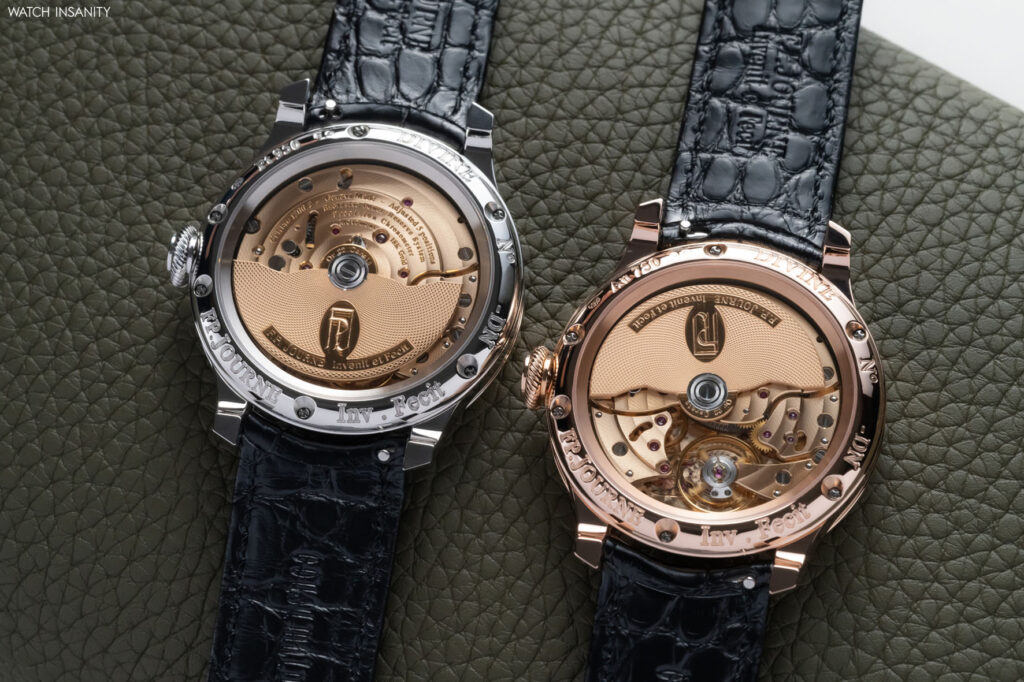
The one-metre long spring provides an average torque of 850 grams, limiting the loss of amplitude for the balance wheel to 25% over five days. Beyond this period, the watch will continue to run for another day or two, but the loss of amplitude will no longer guarantee chronometric accuracy. Nonetheless it remains a respectable performance that, on these Divine references, is matched by classic, balanced, refined aesthetics – to which a five-row bracelet in the same material as the case or, alternatively, an alligator strap contributes.
The two references in question cost 46,600 CHF excluding taxes for the gold case, and 49,600 CHF excluding taxes for the platinum case. In Italy, it can be tried on in Milan at GMT ‘Great Masters of Time’, via della Spiga 25. A partner of François-Paul Journe since 2007, in 2014 GMT ‘Great Masters of Time’ was the first retailer in Europe to open an Espace F.P.Journe, a true salon where collectors and enthusiasts can see and touch the Maestro’s watch collections. The Divine is no exception, indeed: it is one of those pieces that can only be fully appreciated by trying them on the wrist. In this sense, the boutique experience is priceless.
By Davide Passoni


